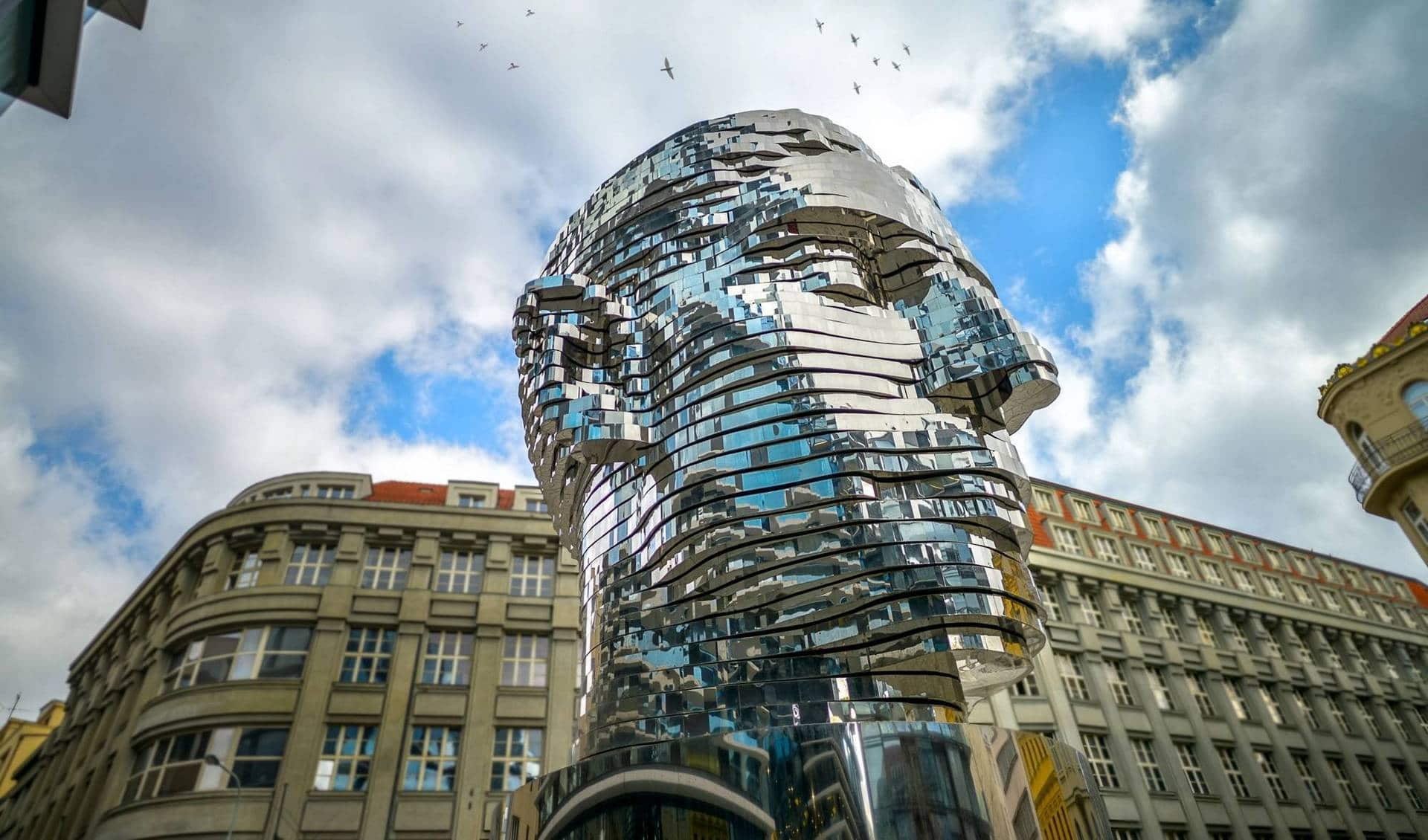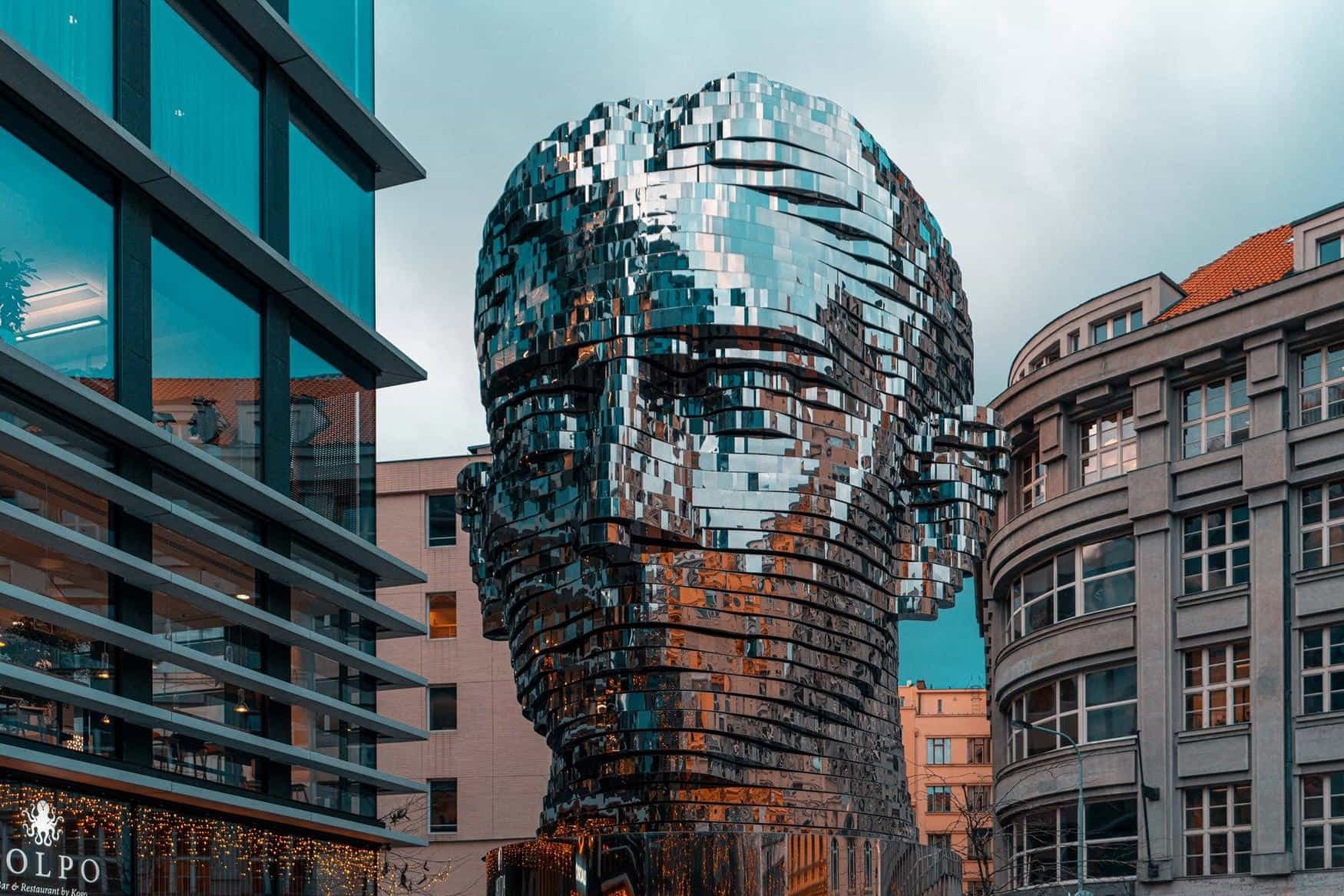Immersing in the fascinating culture of Prague, families exploring the Czech Republic cannot miss the opportunity to witness the impressive tribute to the most influential and appreciated writer of the 20th century, Franz Kafka. Nestled in the city's vibrant streets, a remarkable piece of kinetic art seamlessly blends the spirit of Prague's historical legacy with contemporary artistry. David Černý’s statue, a towering 11-meter-tall structure composed of 42 rotating panels, presents a mesmerizing optical experience that captivates adults and children alike.
As the layers of Černý's dynamic sculpture twist and align, visitors of all ages can engage with Kafka's legacy interactively. This unique installation pays homage to Kafka's influence. It does so through the lens of an ever-changing work of art that echoes the transformative nature of his writing. Located near the bustling Quadrio shopping center, the famous rotating head sculpture has become a must-see attraction for families seeking a blend of educational and visual entertainment in the heart of the Czech capital.
Contents
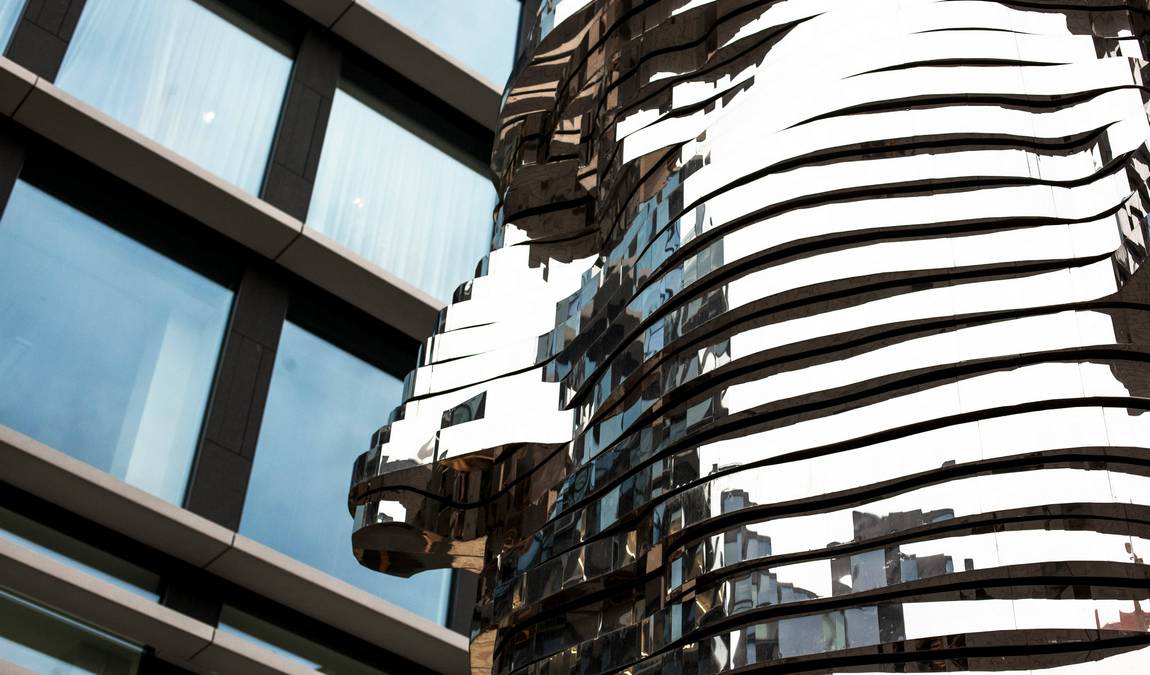
Photo: unsplash.com
Why It Might Be Interesting for Kids
When planning a family trip, including sights that captivate the imagination of the young ones is critical. The Head of Franz Kafka is an artistic marvel in Prague that offers a unique experience for young visitors. Here are some reasons why the Head of Franz Kafka Statue is worth visiting with kids:
- Fascination with Movement: Standing 11 meters tall, the shimmering reflective surface of the 42 rotating metal plates catches the daylight in mesmerizing patterns. Children, especially those aged 6-12, are frequently intrigued by the kinetic aspects of art, and this sculpture's ability to change shapes provides an interactive visual spectacle.
- Imagination Ignition: Kafka's works often play with the boundaries of reality and fantasy. This sculpture embodies this essence as a great conversation starter with children about creativity and storytelling. It could inspire them to imagine their stories or ignite an interest in literature.
- Educational Value: Visiting the statue is not only about viewing an art piece; it presents an opportunity to engage kids in a discussion about history and the significance of Franz Kafka's contributions to literature. It contextualizes the piece and allows children to learn outside the classroom environment.
Like Kafka's writings, the sculpture's transformational nature acts as a bridge to a world where art is not static but an ever-moving river of imagination. For children who thrive on visual stimulation and whose curiosity is piqued by the unusual, the Head of Kafka offers an out-of-the-box cultural experience far from the ordinary museum visit.
Historical Context
The early 20th century was a transformative period marked by profound social and political changes. This zeitgeist profoundly influenced the works of Bohemian German-language writer Franz Kafka, who crafted some of the most enigmatic and enduring literature of the age, reflecting the complexity and anxieties of the time.
Franz Kafka's Life
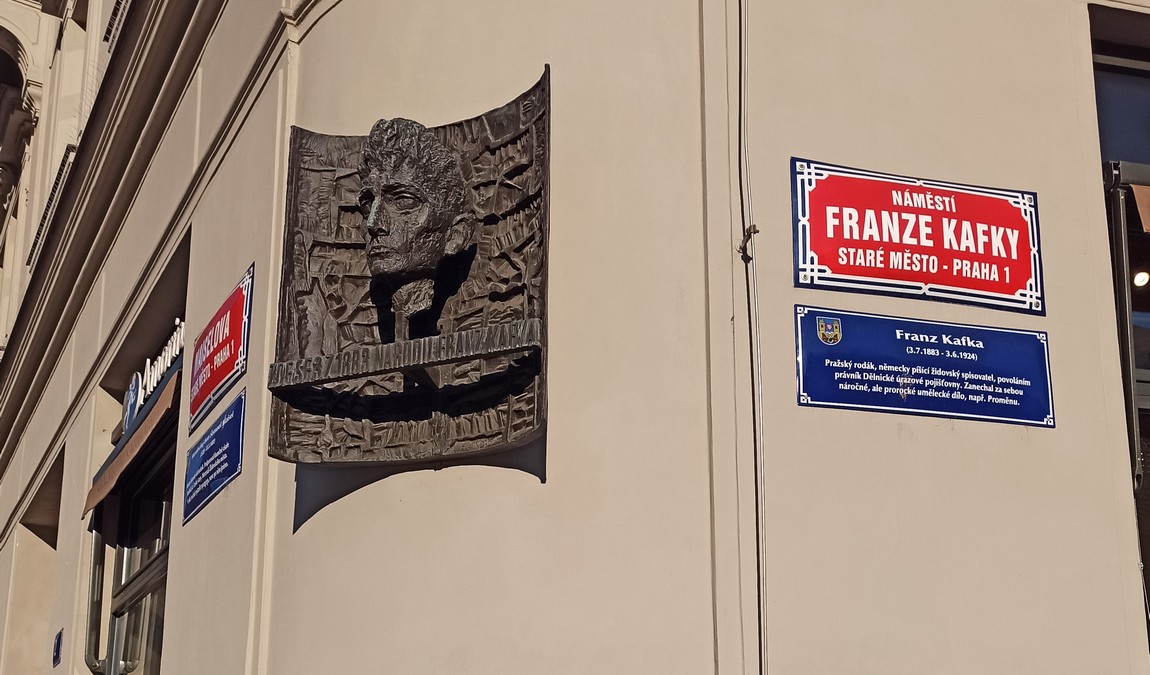 Photo: prague.eu
Photo: prague.eu
Franz Kafka was born in 1883 into a Bohemian family residing in Prague, which was then part of the Austro-Hungarian Empire. His life was one of personal struggle, familial tension, and a constant quest for the meaning of his existence within his homeland's shifting borders and cultures.
- Dates: 1883 - 1924
- Occupation: Author and Novelist
- Cultural Influence: Bohemian German-Language Writer
Despite his modest number of published works during his lifetime, Kafka's posthumous fame escalated when his friend Max Brod defied his wish to have his manuscripts destroyed, bringing Kafka's vision to a broader audience.
Literary Achievements
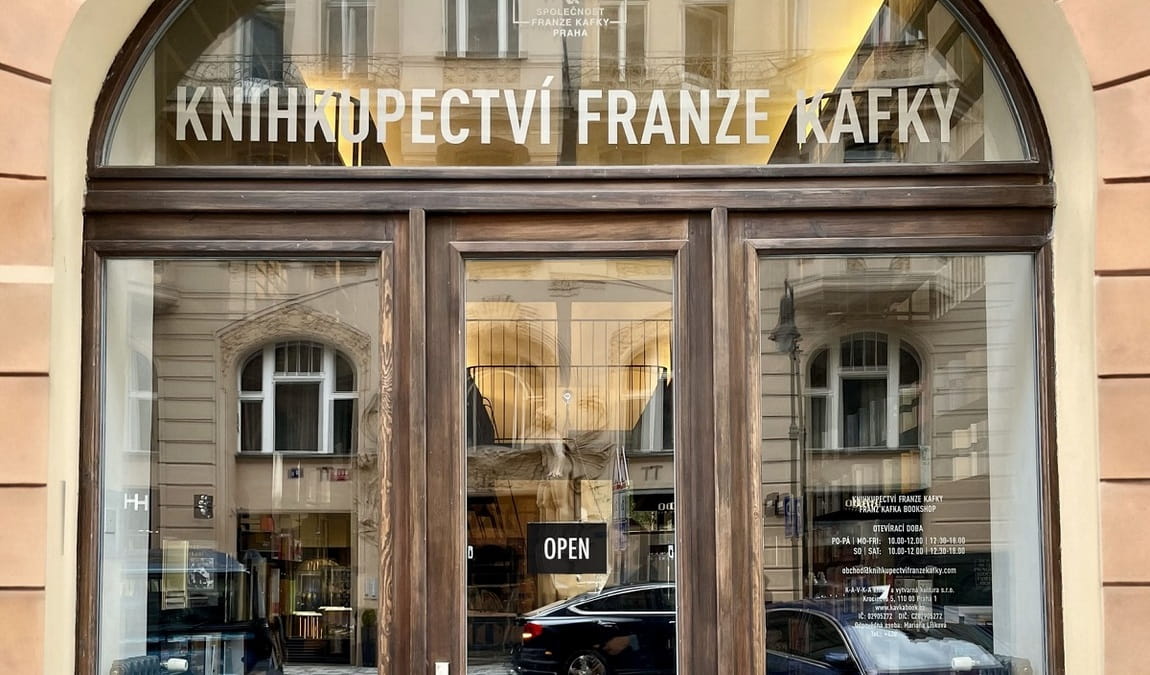 Photo: prague.eu
Photo: prague.eu
Kafka's literature is a cornerstone of modernist literature. It encapsulates the alienation and existential dread that characterized post-World War I Europe. His unique narrative style and surreal storytelling capture the complex emotions of his era.
- Major Works: The Metamorphosis, The Trial, The Castle
- Themes: Isolation, bureaucracy, the surreal and the absurd
Kafka's seminal work, The Metamorphosis, delves into the life of Gregor Samsa, who inexplicably transforms into an insect, symbolizing the disconnect between the individual and societal expectations. Similarly, The Trial and The Castle portray the struggle against unfathomable systems of power, resonating deeply with readers then and now.
In Prague today, Kafka's influence is commemorated by the rotating head sculpture, Otočná hlava, which is both a tribute to his literary genius and a nod to his ever-relevant exploration of human psychology.
The Head of Franz Kafka Sculpture
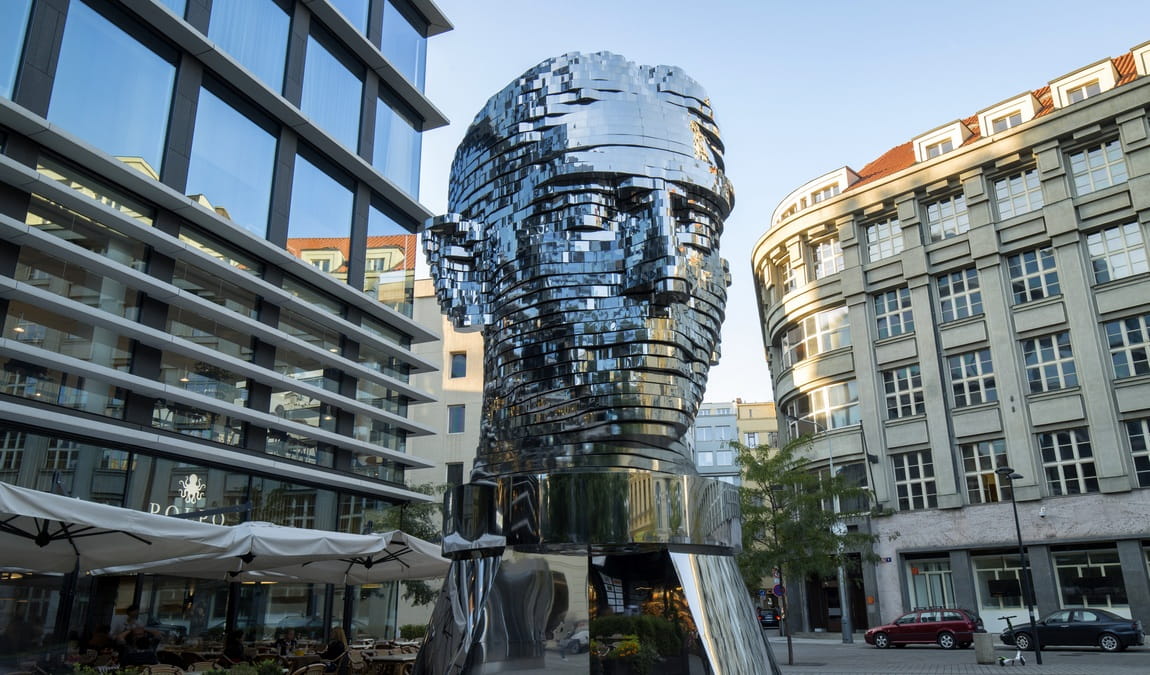 Photo: prague.eu
Photo: prague.eu
In the bustling heart of Prague, a remarkable work of contemporary art demands attention with its intricate design and captivating movements. Prague's most famous moving sculpture, created by the renowned Czech artist David Cerny, is a tribute to the famed writer and a marvel of modern engineering and creativity.
Overview of the Sculpture
Discover the statue just a leisurely 10-minute stroll away from other beloved Prague landmarks, including the National Theatre, Wenceslas Square, and Old Town Square. The Head of Franz Kafka is a striking presence in Prague's cityscape, exquisitely representing the fusion of technology and art. Installed outside the Quadrio shopping center, the sculpture pays homage to Kafka's complex legacy through a visually stunning form that never fails to engage onlookers of all ages.
Design and Structure
The sculpture weighs 39 tons and boasts a towering form that reaches an impressive height. It is composed of 42 layers made of 24 tons of stainless steel that meticulously align to form the distinguishable profile of Franz Kafka. This sculptural technique reflects contemporary art practices and adds a dynamic layer to the viewing experience, accentuating Kafka’s multifaceted personality. Franz Kafka Statue cost 30 million Czech crowns, invested by CPI Property Group and the nearby Quadrio Shopping Center.
Mechanics and Movement
What sets this statue apart is its kinetic nature. The sculpture's rotating head is a testimony to Černý's ingenious use of kinetics in art. The rotating panels are powered by internal motors, allowing them to move independently and align in ever-changing but always recognizable portraits of Kafka. The head layers move randomly in different directions every hour for 15 minutes.
Significance and Interpretation
The statue offers a memorable, educational, and entertaining sight for families exploring Prague. It encapsulates Kafka's transformative influence on literature and perfectly embodies the nature of his writings — layered, reflective, and in constant flux. Visitors can delve into the world of David Černý, recognizing in this magnificent sculpture a reflection of the complexities of the human mind.
Best Time to Visit
When planning a visit to the captivating Head of Franz Kafka sculpture with the little ones, timing is key for an enjoyable experience. This mesmerizing kinetic statue by David Černý is most fascinating when set in motion, which occurs at the turning of every hour.
The ideal time to catch the entire performance is between 8 am and 8 pm. Families should aim to arrive a few minutes before the hour to secure a good viewing spot. It is particularly true during the warmer months when the hours extend until 10 pm, allowing for a pleasant evening outing.
Days to Consider:
- Weekdays are less crowded than weekends, offering a more relaxed atmosphere.
- Public holidays may have more visitors but also provide a festive experience.
With Children:
- Shortly after opening, morning visits are recommended to avoid the midday rush and ensure the kids are energized.
- Late afternoon, around 4–5 pm, can also be opportune, allowing families to wind down the day with an intriguing display.
Handy Tip: The surrounding area has other child-friendly attractions and eateries, making it an excellent stop on a day of exploration.
For a detailed schedule and any seasonal changes, checking the official Quadrio shopping center information before visiting is best. They provide up-to-date timings and maintenance schedules for the sculpture.
How Long Does It Take to Attend?
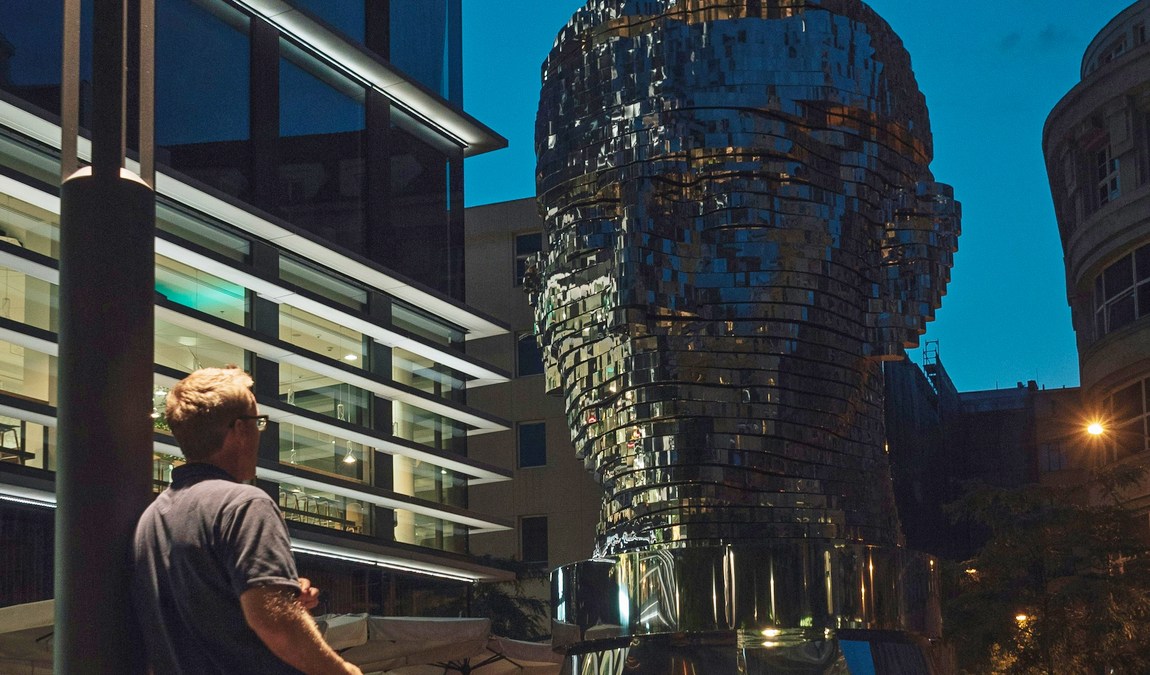 Photo: unsplash.com
Photo: unsplash.com
Visiting the Head of Franz Kafka, a striking piece of modern art nestled in the vibrant streets of Prague, is straightforward. It can be easily accommodated in any family itinerary. When planning their visit, families should allocate a short segment of their day to appreciate this technical marvel.
The experience is brief yet rewarding. Observing the sculpture's full kinetic performance takes approximately 10 minutes. This sculpture, a representation of the famed writer, features layers that intriguingly rotate, crafting a mesmerizing dance of reflective panels that captivates the young and the young at heart.
Timing is critical for those looking to witness the movement. The sculpture rotates every hour from 8 am to 9 pm. Family visitors should arrive before the hour to secure a good viewing spot without waiting.
Here's a quick outline of the attendance duration:
- Observation Time: 5-10 minutes
- Performance Frequency: Every hour on the hour
- Operating Hours: 8 am - 9 pm
The nearby surroundings offer benches where one might pause, leaving children with ample room to move around and for parents to take a moment's rest. The statue is easily accessible and free of charge, making it a stress-free addition to a day spent exploring the city. For added convenience, there are cafés and eateries in the vicinity, ideal for a quick snack after enjoying the Kafka Head's display.
Is the Head of Franz Kafka Worth Visiting?
The Statue of Kafka, standing tall in the bustling heart of Prague, captures the imagination of literary enthusiasts and those intrigued by splendid artistry. This mesmerizing kinetic sculpture graces the cityscape's reflective layers and dynamic movement.
Size and Structure: At an impressive 11 meters, artist David Černý's creation is a technical wonder. The piece's sheer size and mechanical genius are fascinating for adults and children alike, as it offers a playful yet profound experience.
Accessibility and Experience: Families will find the statue uniquely suited for a travel itinerary with kids. It's visually engaging and accessible for free, a practical highpoint for family outings. Located near the Narodni Trida in Prague, the sight of the outdoor sculpture by David Černý is a refreshing break from the usual historical tours, giving children a glimpse into modern art inspired by Prague's cultural heritage.
Educational Value: Beyond its artistic appeal, the statue is an academic piece, igniting curiosity about Kafka's literary contributions. For families valuing cultural enrichment, it's a conversation starter and a real-life illustration of how literature and art intersect.
In Summary, whether seeking an educational diversion or looking to capture a unique moment in Prague, the Head of Franz Kafka is worth visiting for its awe-inspiring mechanics, educational potential, and free accessibility, offering a memorable experience for the entire family. It adds an unconventional twist to Prague's narrative, welcoming even the youngest travelers into its cultural tale.
Consider adding this impressive sculpture to the itinerary when planning a family vacation to Prague. It is a backdrop for unforgettable holiday photos and a portal to engage with the city's vibrant artistic scene. Head of Franz Kafka is worth visiting for its interactive nature, educational value, and the unforgettable memories it promises. Families with kids will delight in the spectacle, ensuring the Head of Kafka is a highlight of their Prague adventure.


